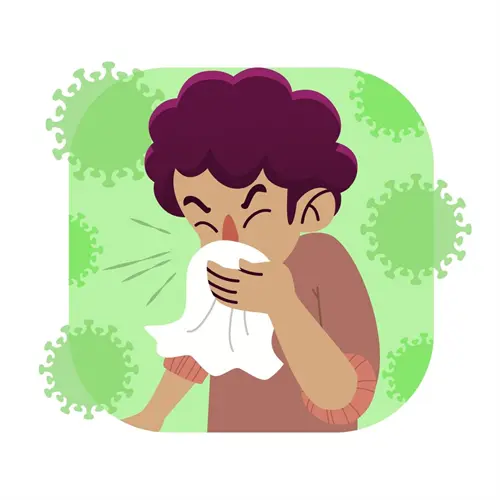Preventive Healthcare
Dysmenorrhea (Menstrual Cramps): Symptoms, Causes, Treatments & Types
585 Views
0

Do you experience severe menstrual cramps that disrupt your life every month? You may be suffering from dysmenorrhea, a type of medical condition which is known by having painful periods. Dysmenorrhea is the a common gynaecological condition which affects women of all ages. While some discomfort during your period is normal, dysmenorrhea involves moderate to severe pain that can really impact your quality of life.
For many women, menstrual cramps are unwelcome guests. However, when this pain becomes severe and interferes with daily activities, it could indicate dysmenorrhea, a gynaecological condition marked by painful periods. If you're among those countless women who are struggling with menstrual cramps every month, you’re not alone. This condition is the most common among women, affecting up to 90% of those who have periods.
In this article, we will look at the types, causes, and symptoms of dysmenorrhea. We will also discuss effective dysmenorrhea treatment options and home remedies to help you feel better and manage your menstrual health.
What is dysmenorrhea?
Dysmenorrhea is the medical term for painful periods or menstrual cramps. It refers to throbbing or cramping pain in the lower abdomen that many women experience before or during their period. This condition affects over half of menstruating women worldwide, with pain ranging from mild to severe. In addition to abdominal pain, dysmenorrhea can be cause symptoms like nausea, vomiting, diarrhea, headaches, and fatigue, significantly impacting daily life. Understanding the various manifestations and underlying causes of dysmenorrhea is essential for effective management and treatment, helping women lead more comfortable lives during their menstrual cycles.
What are the types of dysmenorrhea?
There are two main types of dysmenorrhea:
Primary dysmenorrhea
Primary dysmenorrhea is the most common type of menstrual pain, affecting up to 90% of adolescent girls and 40% of adult women. It refers to menstrual cramps that are not caused by any underlying health issues. Primary dysmenorrhea usually start within a year or two after a girl’s first period and may get better with age or after having children.
Women dealing with this condition might be more sensitive to pain, even when they’re not on their period, which can make them more likely to experience other chronic pain issues.
Secondary dysmenorrhea
Secondary dysmenorrhea refers to painful period cramps caused by underlying issues in the reproductive system, such as endometriosis, uterine fibroids, or a pelvic inflammatory disease. This type of dysmenorrhea typically affects older women and is often associated with more severe menstrual cramps and significant pelvic pain.
Secondary dysmenorrhea can develop at any age, secondary dysmenorrhea frequently presents with additional symptoms, including heavy bleeding during menstruation and discomfort or pain between periods. Identifying the root causes is crucial for an effective treatment and relief of these debilitating symptoms.
Is having dysmenorrhea normal?
While some discomfort during menstruation is normal, dysmenorrhea involves pain that is severe enough to disrupt daily activities. Dysmenorrhea is a leading cause of school and work absences for women in their teens and 20s. Mild cramps may be typical, but severe dysmenorrhea that affects your quality of life is not. Research suggests that up to 15% of women experience dysmenorrhea severe enough to prevent them from going to work or school. If your period pain regularly makes it hard to do everyday tasks, it’s crucial to seek medical advice.
What are the Causes of Dysmenorrhea?
The primary cause of dysmenorrhea is an excess of prostaglandins, which are chemicals that regulate uterine contractions. For secondary dysmenorrhea, medical conditions like endometriosis, pelvic inflammatory disease (PID), uterine fibroids, abnormal pregnancies, and pelvic infections are often responsible for the pain.
What is the main cause of painful periods?
The primary cause of menstrual cramps is due to contraction of the uterus, which is triggered by prostaglandins. When levels are elevated, can cause more sever and painful cramps during monthly periods.
Secondary dysmenorrhea, is usually linked to underlying health issues such as endometriosis, pelvic inflammatory disease (PID), uterine fibroids, or an abnormal pregnancy. Additionally, pelvic infections can also contribute to discomfort. Understanding these causes is crucial for an accurate diagnosis and effective treatment, helping to alleviate the pain and improve overall comfort during menstrual cycles.
Why are period cramps so painful?
Period cramps become painful when the uterine contractions are especially intense and prolonged. This can also squeeze the nearby blood vessels and reduce oxygen supply to the uterine muscles, causing intense pain. This pain may also lead to nausea, dizziness, and diarrhea. Women with dysmenorrhea may be more sensitive to pain during their entire menstrual cycle, making their discomfort worse.
What are the symptoms of painful menstrual cramps?
The symptoms of dysmenorrhea can vary but often include:
- Throbbing or cramping pain in the lower abdomen
- Pain that radiates to the lower back and thighs
- Nausea and vomiting
- Diarrhea or constipation
- Headaches
- Dizziness
- Fatigue
These symptoms typically start 1-2 days before your period and last for 2-4 days. If you experience extreme discomfort or if your symptoms last longer, it's important to see a healthcare provider.
How does secondary dysmenorrhea cause menstrual cramps?
In secondary dysmenorrhea, menstrual cramps are caused by underlying disorders of the reproductive system, such as:
- Endometriosis: When uterine tissue grows outside the uterus, it can cause painful periods, chronic pelvic pain, and pain during sex or bowel movements
- Uterine Fibroids: These noncancerous growths in the uterine wall can cause heavy, prolonged, and painful periods
- Pelvic inflammatory disease (PID): Pelvic inflammatory disease can cause inflammation and scarring, leading to pain
Unlike primary dysmenorrhea, where pain typically occurs during monthly period, the discomfort linked with secondary dysmenorrhea may happen at any time throughout the menstrual cycle. This can make it more challenging to manage, as the pain can be constant and unpredictable.
Females experiencing secondary dysmenorrhea report a range of symptoms that can significantly impact their quality of life, highlighting the importance of seeking medical advice for an effective diagnosis and treatment options.
Understanding these underlying conditions is important for finding a relief and improving overall well-being.
Who is more likely to have dysmenorrhea?
Several factors can increase the chances of experiencing dysmenorrhea:
- Age: It’s most common in women under 30, especially those in their late teens and early 20s
- Early Menarche: Starting your period at a younger age (before 12) is associated to a higher risk
- Heavy or irregular periods: Longer and heavier periods often lead to more severe cramps
- Family history: Having a close relative with dysmenorrhea can increase your risk
- Smoking: Women who smoke are more likely to have painful periods
- Obesity: A higher body mass index (BMI) is associated with an increased risk of dysmenorrhea
Can there be complications of painful periods?
Menstrual cramps typically don’t result in other medical complications, but they can impact your ability to attend school, work, and participate in social activities.
However, certain conditions linked to menstrual cramps can cause serious complications. For example, endometriosis can cause pregnancy issues. Similarly, a pelvic inflammatory disease can create scar tissue in the fallopian tubes, which increases the risk of an ectopic pregnancy, where a fertilized egg implants outside the uterus.
What is the difference between normal cramps and dysmenorrhea?
The main difference between regular cramps and dysmenorrhea is their intensity.
- Normal Cramps: Many people feel light cramps during their period, affecting over 60% of individuals. These cramps are usually mild to moderate and subsides after few days
- Dysmenorrhea: This term refers to painful menstrual cramps that can feel sharp or achy in the lower abdomen. It might also cause back or leg pain, along with other symptoms like nausea, fatigue, and diarrhea.
Regular cramps are usually mild and don’t bother you much, while dysmenorrhea includes painful cramps that can make it hard to go about your daily activities.
How can you relieve menstrual cramps?
Here are some dysmenorrhea treatment options that can help relieve painful periods:
- NSAIDs and pain relievers: Nonsteroidal anti-inflammatory drugs (NSAIDs) such as ibuprofen and naproxen are often the first of defense against menstrual cramps. They help in reducing inflammation and lower prostaglandin levels.
- Hormonal Medications: Hormonal birth control methods such as the pill, patch, or vaginal ring can help regulate your menstrual cycle and reduce painful periods by thinning the uterine lining and decreasing prostaglandin levels.
In addition to medication, these self-care tips can also help ease menstrual cramps:
- Apply a heating pad or hot water bottle to your lower abdomen
- Take a warm bath
- Gently massage your abdomen
- Use relaxation techniques like deep breathing or meditation
- Stay hydrated and try to avoid caffeine and alcohol
- Get regular exercise, which can boost endorphins and help reduce pain
Can we prevent dysmenorrhea?
While it may not be possible to completely prevent dysmenorrhea, there are steps you can take to reduce your risk and manage your symptoms:
- Maintain a healthy weight through regular exercise and a balanced diet
- Quit smoking and limit alcohol consumption
- Practice stress-reduction techniques like meditation or yoga
- Use hormonal birth control as directed by your healthcare provider
- Stay hydrated and eat a diet rich in fruits, vegetables, and whole grains
- Consider taking dietary supplements like omega-3 fatty acids, vitamin E, and magnesium
When to see a doctor?
If Painful periods are disrupting your daily life, it's crucial to reach out to your healthcare provider. While mild cramps are common, Severe menstrual cramps can affect your daily life. Tracking your periods and noting when the pain is most intense. Additionally, keep an eye on any other symptoms, such as headaches or heavy bleeding.
Your healthcare provider will inquire about the onset of your periods, the duration of your symptoms, your sexual activity, and any family history related to dysmenorrhea.
Conclusion
Living with dysmenorrhea can be challenging, but with the right knowledge and support, you can find relief and manage your menstrual health effectively. By understanding about its types, causes, and symptoms of dysmenorrhea, along with the treatment can help you create a plan with your doctor for managing painful periods. If your cramps are really impacting your life, be sure to seek medical assistance.
At Metropolis Healthcare, we understand the role of accurate diagnosis in identifying the root causes of your symptoms. We provide a reliable pathology testing to identify any of the underlying conditions contributing to your menstrual pain. Our skilled phlebotomists offer convenient at-home sample collection for a comfortable experience.
Start your journey to better menstrual health by visiting our website or using our user-friendly app to book an appointment. You can prioritise your well-being with the right information and support. Take control of your menstrual health today by exploring our comprehensive women's health check-up packages as well as scheduling a personalised appointment with Metropolis Healthcare.























 WhatsApp
WhatsApp